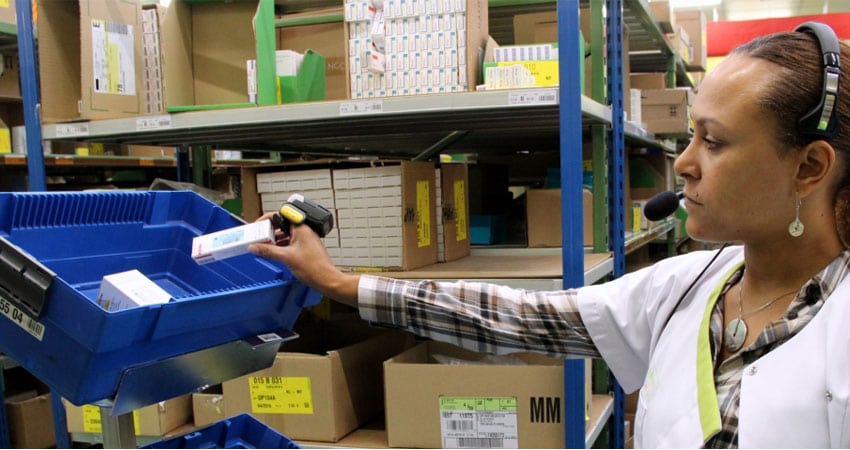When it comes to applying voice technology, and in particular voice picking, there are many benefits that a warehouse will certainly realize. Typically, companies see improvement in terms of additional picked units per hour, increased work pace, better accuracy and a reduction in online data entry and data preparation.
Implementing and maintaining voice picking technology comes with its own set of challenges. It’s important to understand these challenges upfront in order to lessen the pain and frustration not only in the implementation process but on an ongoing basis.
To help you get there, here are 8 considerations to improve your planning as you look to move up to a voice-driven system:
Radio Frequency and WiFi Coverage
A superior WiFi signal covering the entire warehouse, including all storage and office areas, is a must. The vendor or their contractor can provide a test of signal strength. Even if you’re just starting out with voice picking technology, plan ahead for possible add-on applications like voice support for tablets and smartphones, as well as keyed data entry and barcode scanning.
Difficulty Understanding Employee Voice
Depending on the amount of background noise (e.g. a blast freezer or manufacturing), it can be difficult for the voice system to understand the responses from the associate. The system also needs to be programmed to match the voice and dialects of the employees. Be sure you know how well the potential system will adapt to these conditions.
Relabeling Warehouse and Products
Many times warehouse locations and products will need to be relabeled for the new system. Voice solutions prompt a worker to read back a set of check digits for the specific location. The time and money spent in prep needs to be considered when implementing voice picking technology.
Application Design
Will the new application handle all exceptions or will there be types of transactions that allow, or require, the picker to go off the voice system? Work through with the vendor all the transactions and conditions you require. Are there any sequences which require going off system, such as kits on the fly or other value-added services that create challenges?
Training and Use of New System
Voice picking technology establishes a new system process and standard. We have seen installations where some employees don’t adapt well to the new system initially. To get the savings and other benefits, everyone has to use the system. This may sound like a no brainer but some companies struggle with it.
The voice picking technology system may be difficult for some people to learn, be comfortable with and return to higher productivity. Develop training materials and processes. How long will each person need? Be sure to provide plenty of hands-on use in the training. Will there be a loss of productivity until the warehouse is up to speed with the new system? Develop a project plan for the implementation.
IT Support
Once the warehouse is on voice, any system and technology issues will need to be managed by IT personnel. Issues may not always arise during normal business hours so it’s important to have access to helpdesk or technical personnel.
Have a Backup Plan
If your voice system experiences an outage, this may create serious operational downtime. Develop a backup plan and procedures for the various types of outages that can happen.
Achieving ROI
Many times companies see a payback in 12 months or less. Vendors may have an ROI calculator that will help you understand the potential savings. Typically, CFOs expect an ROI in 18 months or less – what is the expectation in your company? How will it be achieved?
Voice technology, and in particular voice picking technology, is an important investment that can improve productivity and reduce costs in your fulfillment center. These considerations will help your business achieve an effective system and process for successfully implementing and using voice tech.
Brian Barry is President of F. Curtis Barry & Company

